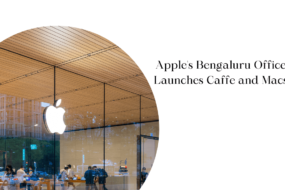As technology continues to evolve, the future of work is becoming increasingly reliant on two groundbreaking advancements: artificial intelligence (AI) technology and virtual reality (VR). AI and VR are being used across many industries, from healthcare to retail, to revolutionize the way we work, learn, and interact with one another. This blog post will explore the differences between AI and VR, and discuss how these technologies are reshaping the workplace of the future.
The Basics: What is Artificial Intelligence (AI)?
Artificial Intelligence (AI) is a form of technology that enables machines to complete tasks in a way that mimics the abilities of a human being. AI is a broad area of study that focuses on creating computer systems with the capability to learn, reason, and make decisions like a human. AI systems are designed to take in data, identify patterns and generate insights, while taking actions independently or with minimal human supervision. AI technology can be applied to various fields such as robotics, computer vision, natural language processing, and autonomous vehicles. Common applications of AI include facial recognition, speech recognition, automated customer service, and medical diagnostics. AI has the potential to revolutionize many aspects of our lives, from healthcare and manufacturing to marketing and education.
What is Virtual Reality (VR)?
Virtual Reality (VR) is an immersive technology that creates a simulated environment for users. It has been around for decades, but the recent advancements in Artificial Intelligence (AI) technology have pushed VR to the forefront of consumer technology and even workplace applications.
In virtual reality, users are able to interact with 3D environments and objects as if they were physically present. This technology can be used to create realistic simulations that allow users to explore and experience an environment that would otherwise be impossible or unsafe. VR also has the potential to create an engaging and immersive educational experience, allowing students to gain knowledge and skills through interactive activities.
By utilizing AI-powered algorithms and technologies, developers can create more realistic VR experiences. AI can help simulate physical attributes such as body movement, facial expressions, and voice to create a more believable experience. This allows developers to create a highly immersive experience that could potentially revolutionize the way people interact with and learn from digital environments.
VR can provide an unprecedented level of immersion, making it a viable tool for training and simulating tasks in a safe and controlled environment. This could lead to improved productivity in the workplace and could potentially open up new job opportunities that require employees to work remotely in virtual worlds.

How Might AI and VR Impact the Future of Work?
As the world of technology advances, so too does the potential of Artificial Intelligence (AI) and Virtual Reality (VR). AI and VR have the potential to significantly change the way we approach our work. From more efficient ways of completing tasks to new methods of interacting with our colleagues, AI and VR are set to revolutionize the future of work.
The potential applications of AI and VR for work are broad and varied. In particular, AI can be used to automate tasks and analyze data to identify patterns. This could have a huge impact on how people interact with their jobs in the future, from speeding up mundane processes to helping workers make decisions more efficiently.
Similarly, VR has the potential to completely change the way employees interact with each other. For instance, remote teams could collaborate in virtual worlds, allowing for more effective communication and collaboration across long distances. Additionally, VR could provide an immersive training environment, enabling workers to quickly learn new skills or roles without needing to leave their workplace.
As AI and VR become increasingly commonplace in the workforce, it is important to consider how they will affect job roles. While some jobs may be replaced entirely by AI or VR, others may require additional training or different skillsets to use them effectively. It is therefore essential that employers ensure their employees are adequately prepared for the transition to a more AI- and VR-based working environment.
Jobs That May Be Impacted by AI and VR
Artificial Intelligence (AI) and Virtual Reality (VR) have become increasingly prevalent in our modern lives, and the future of work is no exception. AI and VR are already having an impact on how people do their jobs, from automation to digital assistance, and it’s likely that this will continue to expand.
AI technology can help automate jobs that would traditionally require a lot of manual labor, like repetitive data entry or bookkeeping tasks. VR can also be used to train employees in fields such as engineering and architecture, allowing them to experience simulations in a safe environment. In addition, AI can be used to provide personalized customer service experiences, allowing for more efficient responses and higher customer satisfaction.
AI-powered robots can also be used for a variety of tasks, such as warehouse inventory management and manufacturing. AI-enabled machines can learn new tasks quickly, meaning they can replace human workers in roles that don’t require a high level of emotional intelligence.
In healthcare, AI and VR can help diagnose diseases faster and more accurately than traditional methods. It can also be used to develop new treatments and drugs by analyzing large data sets. VR can also be used to simulate medical procedures, allowing medical students and professionals to practice their skills in a safe environment.
Finally, AI-powered autonomous vehicles are being developed that could replace human drivers in many industries. This could include delivery services, public transportation, and even taxi services. Autonomous vehicles are expected to be safer and more efficient than their human counterparts, making them attractive for companies looking to save costs.
Overall, it’s clear that AI and VR will play a major role in the future of work. Companies that embrace these technologies now may be able to get ahead of the competition, while those that are resistant may find themselves behind the curve in the long run. The possibilities for AI and VR in the workplace are almost limitless, so it’s worth exploring the potential opportunities these technologies can bring to your business.
Training for Jobs in a VR or AI World
As Artificial Intelligence (AI) and Virtual Reality (VR) become more prominent in the workplace, it’s essential for those working or seeking work in the tech industry to develop skills that will enable them to work with these technologies. Training for a job in a VR or AI world requires knowledge of the latest tools and techniques used by both industries.
To start, learning about Artificial Intelligence is an important first step. AI has been used for decades in many industries such as robotics, natural language processing, and computer vision, but it is now becoming even more popular due to advances in technology. Understanding the fundamentals of AI, such as machine learning algorithms and neural networks, will be key to succeeding in the industry. In addition, knowledge of programming languages such as Python, Java, and C++ can help individuals develop the necessary skills to work with AI.
Those seeking to enter the VR world should also consider training for their job. VR encompasses a wide range of technologies including 3D graphics, motion tracking, and sound design. While some aspects of the technology can be learned independently, many experts recommend attending specialized workshops and courses to gain expertise in the field. Understanding how to create immersive experiences with virtual reality can give individuals a competitive edge in the job market.
Additionally, those interested in working with both AI and VR may benefit from combining their training. By understanding both fields, individuals can create more innovative solutions to problems and combine their skillsets to develop more advanced technologies.
Overall, whether someone is looking to enter the AI or VR job market, it’s important to stay up-to-date on the latest developments and be prepared with the necessary skills to succeed. With training and practice, anyone can become an expert in the exciting world of Artificial Intelligence and Virtual Reality.






